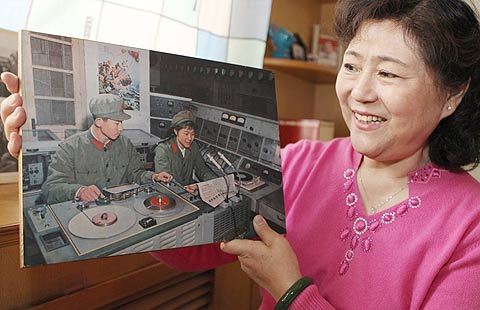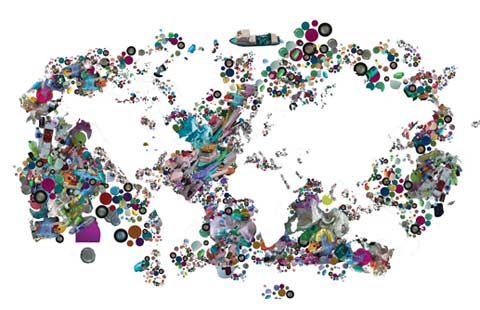Yuan depreciation likely to be temporary
Updated: 2014-05-23 07:42
By Zhou Feng (China Daily Europe)
|
|||||||||||

Effort to crack down on speculative funds behind short-term slide
The renminbi has decreased by more than 3 percent this year against the US dollar, reversing the trend of appreciation that had taken place since the end of a currency peg amid the global financial crisis in 2010.
The yuan's effective exchange rate index, which took into consideration the purchasing power of currencies, stood at 115.16. That's the lowest level since March 2013, according to Bank for International Settlements.
Although depreciation could be seen from time to time in the past few years, this decrease appears to be unusually long and deep.
The rare movement of the Chinese currency fueled speculation that the yuan has ended its decade-long appreciation and is headed downward.
But based on analysis of economic data and the motives of policymakers, it makes sense to say that the yuan has the potential to appreciate in the near term, and a turning point may come in the medium term, possibly in a year or two.
In the first quarter of the year, China continued to register a "double surplus". Its current account surplus amounted to $7.2 billion and capital account surplus hit $118.3 billion, suggesting that capital continued to flow into the country. This shows the market is still thirsty for yuan, providing a foundation for the currency to rise in value.
In addition, the central bank continued to purchase US dollars to release yuan in the past few months, as can be seen in positive foreign exchange purchases. This also showed an obvious demand for the yuan.

This round of depreciation was more a result of the government's efforts to crack down on speculative funds.
The central government, since taking office in March of last year, has been committed to reducing the level of leverage in the economy so as to deal with problems such as over-reliance on the property market, mounting debt levels and slow progress in economic restructuring.
It has been sticking to a tightened monetary policy even if the economy slows down at times, in hope of curbing excessive and easy credit.
But the good intentions of the government become compromised because businesses are smart enough to take the advantage of the interest rate gap between the yuan and the greenback for loans.
A typical way of getting easy and cheap loans is to use an overseas-registered subsidiary company to borrow in the US dollar and then transmit the money to the parent company in China through fake trade. The money then will be invested by the parent company in China. Another way to obtain cheap loans is through what is called "commodity financing", in which companies borrow money from overseas in the name of importing commodities such as copper, iron ore and steel. The company then invests the money in China. Because the yuan's interest rate is much higher than the US dollar's, the company actually can benefit from cheap loans from overseas and high returns in China. This explains why trade figures sometimes have been distorted and imports of bulk commodities unusually high.
In reality, many of the loans are invested in China's property market, which is something that the central authorities are determined to curb.
Such arbitrage emerged starting in 2009, when China expanded its cross-border yuan settlement. It became rampant in the past two years, causing the government to bolster its vigilance.
That is why top policymakers recently tried to narrow the rate gap by depreciating the yuan. They wanted a declining renminbi to squeeze speculative funds out of China and deliver a warning to the market that the yuan is not always a one-way street.
Their efforts paid off. China's trade figures slowed down sharply on yearly terms, showing that speculative funds were driven out, making the statistic authentic.
A depreciating yuan also came as the Chinese economy slowed down in the first quarter. Growth in retail sales, fixed-asset investment and exports all went down, while the consumer price index continued to slide. Global investors are adopting a wait-and-see attitude toward China, with foreign direct investment slowing sharply. This puts some downward pressure on the yuan. After all, the strength of a currency is ultimately based on its economy's strength and effectiveness.
But with the Chinese economy expected to improve in the second quarter, this pressure will diminish.
What's more, authorities are likely to reduce their intervention in the market to let the yuan go back to the path of modest appreciation later in the second quarter. The United States also will gradually go into a credit-tightening circle, a move that will help narrow the rate gap between the yuan and the US dollar. If so, the necessity for China to keep a lid on the yuan will be reduced.
In addition, a rising yuan will help government initiatives of boosting the currency's international use and encouraging Chinese enterprises to invest overseas.
A stronger yuan means higher purchasing power in foreign currencies. This helps Chinese enterprises conduct mergers and acquisitions, source foreign products and slash production costs in overseas markets.
Another reason top policymakers favor an appreciating yuan is that China has to maintain the currency's growing momentum to promote its globalization. It is clear that the yuan's popularity in overseas markets stems mostly from its rising value instead of its convenience and international status. Strengthening the yuan is a quick option to push it onto the world stage.
So, the yuan still has the chance to register some growth for the whole of 2014, so long as a capital surplus exists.
But room for the yuan to continue growing will become smaller and smaller in coming years.
The yuan is very close to the equilibrium point in its exchange rate with the dollar.
China's current account surplus has been smaller than 3 percent of the GDP for three years in a row. A rate lower than 4 percent is often considered equilibrium for the currency's exchange rate.
On the international front, accusations of an "undervalued yuan" almost have disappeared in the past few years, suggesting that other countries also believe the yuan's value is now quite fair. The recent US criticism over a depreciating yuan was more about a sudden turnabout in the policy instead of the pace of the drop in value of the yuan.
Now that the US economy is recovering and heading into a round of increasing interest rates in the coming few years, the US dollar will gain strength. At that time, the yuan's exchange rate against the greenback may reach equilibrium. If the US economy continues to outperform China's in terms of effectiveness, the yuan will probably depreciate against the dollar.
As to where the equilibrium is to be found, there are many theories.
Former premier Wen Jiabao said in March 2012 that the value of the yuan was near "an equilibrium" when 6.3 yuan traded for $1.
According to research published by the Peterson Institute for International Economics on its website, the yuan already is fairly valued. The research used the 2011 purchasing power parity estimates of GDP released by the World Bank on April 30 and projected the yuan's equilibrium valuation for 2014, concluding that the currency is not undervalued at all.
Chinese policymakers keen to promote outbound investment may have a yardstick to judge the equilibrium point.
The point may emerge when China's outbound investment equals inbound investment. Based on last year's figures and growth momentum, the two had a less than $30 billion gap and will line up in a year or two.
The author is a Shanghai-based financial analyst. The views do not necessarily reflect those of China Daily.
(China Daily European Weekly 05/23/2014 page10)
Today's Top News
Egypt angered about China's fake Sphinx
Poroshenko wins Ukraine election - exit poll
Euro elections reflect EU consensus
Pope calls for Israel-Palestine peace
Click profit online in China
Ukraine's presidential polls backfire
EU-wide elections could shake up the bloc
Beijing urges to intensify terror fight
Hot Topics
Lunar probe , China growth forecasts, Emission rules get tougher, China seen through 'colored lens', International board,
Editor's Picks

|

|

|

|

|

|





